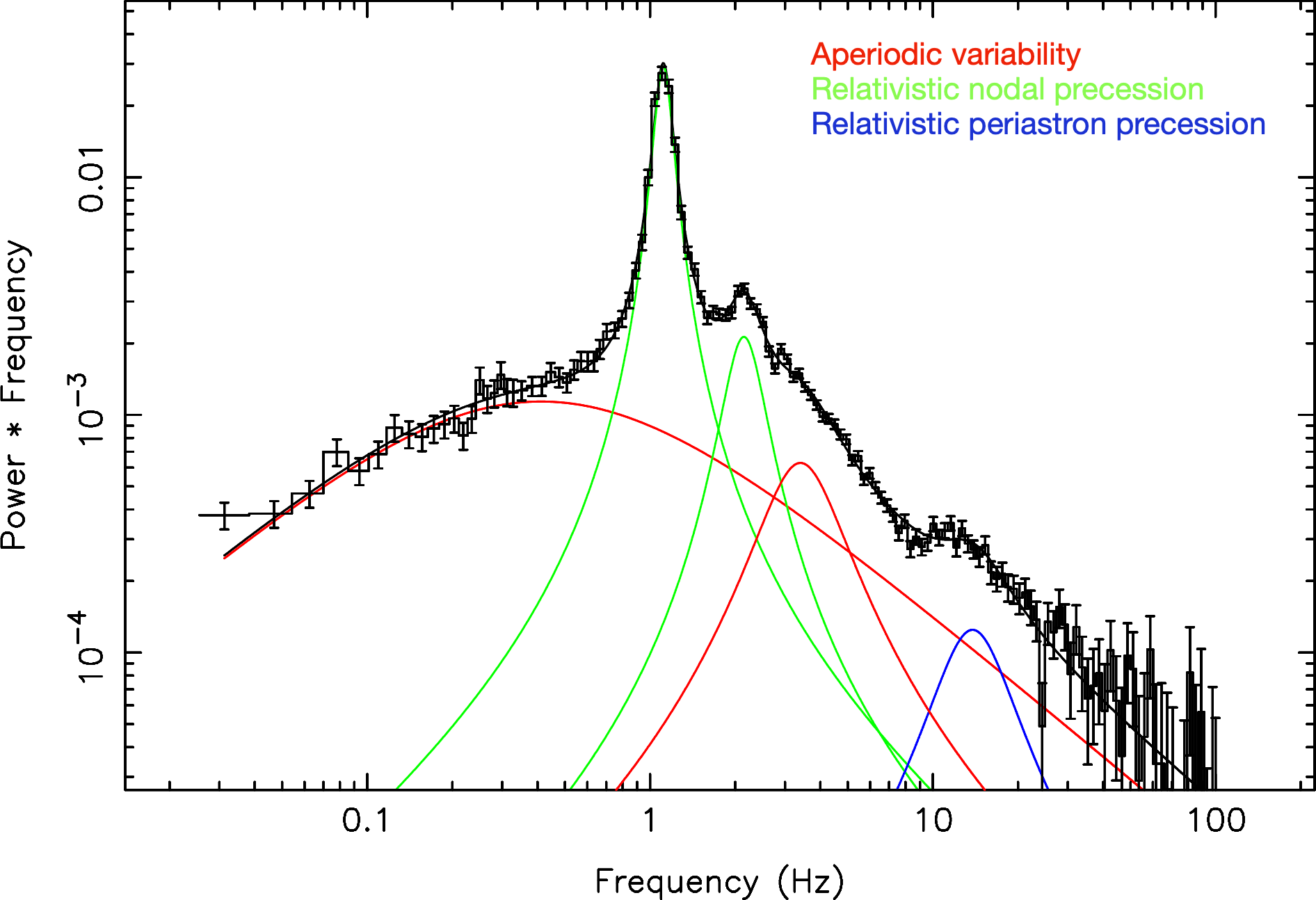NICER / ISS Science Nugget
for August 31, 2023
An Exceptional Black-Hole Outburst
A newly discovered accreting stellar-mass black hole, Swift J1727.8-1613, has quickly become one of the brightest objects ever observed by NICER. The high X-ray flux from the system enables us to study the flow of matter around black holes in exquisite detail. The outburst of Swift J1727 began late on August 24; NICER received notification and began observing on Aug 25. NICER is uniquely capable of observing very bright X-ray sources with the instrument's full measurement capabilities, but the rise of Swift J1727 was so rapid that observations after the first one were restricted to orbit-night and only a subset of NICER's 52 detectors to avoid internal telemetry saturation.
The early stage of accreting black-hole outbursts is characterized by rapid variability and an energy spectrum dominated by high-energy emission from a hot plasma of uncertain geometry, called a "corona." Radiation from the corona interacts with the accretion flow, producing "reflected" emission that also contributes to the measured spectrum. Modeling of this reflection component offers a probe of the strong gravity near the final stable orbit of the accreting gas before it plunges into the black hole. Among other measures, analysis of reflected emission can yield an estimate of how rapidly the black hole is spinning and distorting the gravitational field in the vicinity of the event horizon. In the case of Swift J1727, early results indicate near maximal rotation, together with evidence for a fast "wind" outflow and the inclination of the accretion-disk plane relative to our line of sight of approximately 48 degrees.
Rapid variations in X-ray emission are studied through a power spectrum, in which the strength of the variability is shown as a function of the variability frequency. For Swift J1727, we identify broad components (shown in red in the figure below) due to aperiodic variations in the accretion flow, as well as narrower components (shown in green). The latter are referred to as quasi-periodic oscillations (QPOs) and are generally believed to be due to relativistic "nodal" precession of matter orbiting a spinning black hole. The frequency of these QPOs has steadily been increasing during the first week of the outburst, indicating that matter is orbiting the black hole at progressively smaller radii. The power-spectral component around 15 Hz (shown in blue) is relatively broad and is not commonly detected with NICER in black-hole systems. In past studies of accreting black holes with other instruments, this feature has been found to evolve into a narrow QPO when the orbital radius decreases even further. It has been interpreted as relativistic periastron precession (similar to what is observed in the orbit of Mercury around the Sun). Together, the low- and high-frequency QPOs can be used to constrain the spin of the black hole, an independent result that can then be compared to spin estimates from energy-spectral methods, providing an invaluable test of both models.
NICER's preliminary results for these early observations of Swift J1727 were reported in two Astronomer's Telegrams (ATELs) this week, ATEL #16207 led by B. O'Connor (George Washington Univ.) and ATEL #16219 led by Paul Draghis (Univ. of Michigan). Additional observations are underway, including coordinations with multiple ground- and space-based telescopes. However, the damage suffered by NICER in late May by orbital debris, resulting in a light "leak" that severely hampers data acquisition during orbit-day, will limit the amount of continued coverage NICER can provide. Specifically, it seems likely at present that NICER will miss further brightening of Swift J1727 during its expected transition to the "soft state" (dominated by thermal glow of the accretion disk), evolution of the 15 Hz periastron-precession QPO to still higher frequencies (which would probe spacetime at the edge of the black hole's event horizon), and a possible jet ejection event (of interest to radio and infrared telescopes, including NASA's JWST).

Power spectrum -- a measure of the strength of brightness variations at different frequencies -- from a recent NICER observation of the newly discovered black-hole binary Swift J1727. The stepped black trace and error bars represent NICER's measurements, while the colored traces break down the overall spectrum into model components and their hypothesized origins, as shown in the legend. Aperiodic variability likely arises from turbulence in the accretion flow, while nodal and periastron precession result from motion of the heated gas in the contorted gravitational field close to the rapidly spinning black hole. (Credit: J. Homan)
<< Previous
Main Index
Next >>